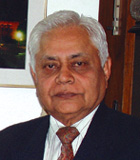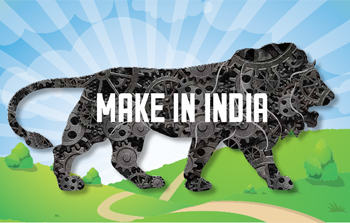INDIAN ARMED FORCES CHIEFS ON OUR RELENTLESS AND FOCUSED PUBLISHING EFFORTS

The insightful articles, inspiring narrations and analytical perspectives presented by the Editorial Team, establish an alluring connect with the reader. My compliments and best wishes to SP Guide Publications.

"Over the past 60 years, the growth of SP Guide Publications has mirrored the rising stature of Indian Navy. Its well-researched and informative magazines on Defence and Aerospace sector have served to shape an educated opinion of our military personnel, policy makers and the public alike. I wish SP's Publication team continued success, fair winds and following seas in all future endeavour!"

Since, its inception in 1964, SP Guide Publications has consistently demonstrated commitment to high-quality journalism in the aerospace and defence sectors, earning a well-deserved reputation as Asia's largest media house in this domain. I wish SP Guide Publications continued success in its pursuit of excellence.
- Appointments Committee of Cabinet approves one-month extension in service of Chief of the Army Staff
- Admiral Dinesh K. Tripathi assumes Command of the Indian Navy as 26th Chief of the Naval Staff
- Prime Minister witnesses 'Bharat Shakti' – a Tri-Services Firing and Manoeuvre Exercise in Pokhran, Rajasthan
- Interim Defence Budget 2024-25 — An Analysis
- Union Defence budget 2024
- Prime Minister Modi Commemorates Indian Navy Day in a Grand Ceremony
Make in India: Quo Vadis?
Only with a major overhaul of the bureaucratic establishment and the government machinery as a whole, will the highly mechanised lion representing the spirit of the ‘Make in India’ campaign, begin to roar!

India ranks among the top ten countries in the world in terms of military expenditure. Today, India is equipped with the third largest armed forces in the world and despite the sizeable indigenous aerospace and defence industry, both in the public and private sector, around 65 to 70 per cent of the requirement of military hardware, continues to be met with through imports. India is also the second largest importer of weapon systems, having been overtaken by Saudi Arabia only a couple of years ago. High level of dependence on foreign sources for military hardware not only results in the depletion of foreign exchange reserves in financing expensive imports, more importantly, it also imposes crippling dependence on original equipment manufacturers (OEM) abroad for maintenance as well as upgrade or replacement of obsolescent inventories.
A Stagnant Sector
In the post-independence era, on account of policy imperatives, the private sector was kept out of the domain of the Indian aerospace and defence industry which remained under the control of the central government. However, the government controlled aerospace industry did create elaborate infrastructure and successfully undertook production of fighter and transport aircraft as also rotary-wing platforms for the Indian armed forces as also for limited civilian application. But the so-called “production” was largely “assembly” of the platform using kits received from OEMs. There was no real transfer of technology or development of skilled human resources to enable the nation to leapfrog to indigenous production of sophisticated platforms. The aerospace and defence industry therefore de facto remained stagnant over the years.
Launch of ‘Make in India’ Scheme

It was on account of the desire to correct this long-standing imbalance or anomaly, that soon after the NDA government came to power at the Centre, Prime Minister Narendra Modi launched the ‘Make in India’ campaign in September 2014 with the aim to pull the indigenous defence manufacturing sector from the morass it had descended into and give it a new lease of life. His sustained thrust on this campaign since then and especially during his visits abroad, did generate considerable interest amongst the foreign governments and OEMs alike to exploit the immense opportunities that India had to offer. Not only did India offer a sizeable and a multibillion-dollar lucrative market for military hardware, it also provided a large human resource pool and the distinct advantage of production at substantially lower cost. But there have been and continue to be impediments to the realisation of Prime Minister’s dream of ‘Make in India’ in the defence manufacturing sector.
One of the first steps that the government took was to revamp the Defence Procurement Procedure (DPP). The revised edition was released at the Defexpo in March 2016 at Goa. From the initial reactions of the stakeholders it appears that in the DPP 2016, a number of procedural bottlenecks have been removed. DPP 2016 provides a more conducive, business-friendly and flexible environment for the Indian armed forces and the defence industry, both foreign and domestic, to work together on co-production of proven platforms or on the projects for the co-development of new platforms.
The Indian Private Sector
For its part, the Indian aerospace and defence industry is willing to make every effort for the success of the ‘Make in India’ scheme. In fact, a number of firms have already displayed their competence levels and have made headway in this field well before the scheme was conceived and launched. There are a number of success stories such as Tata Advanced Systems Limited (TASL) has joined hands with Sikorsky Aircraft Corporation of the US, a company taken over by Lockheed Martin Corp in the recent past, to manufacture cabins as also other components for the S-92 helicopter at their facility in Hyderabad. Incidentally, the Sikorsky S-92 VVIP helicopter is used by the President of the US for short distance air travel. So far, TASL has manufactured over 150 cabins, all for the US market.
While there has undoubtedly been some forward movement in the ‘Make in India’ campaign of the government, there is still some more ground to be covered
Another Indian entity to display its capability and innovative approach in aerospace manufacturing is Bengaluru-based Mahindra Aerospace that has acquired majority stake in GippsAero of Australia and has been manufacturing the Airvan 8, a seven-seat utility aircraft and Airvan 10, a ten-seat turboprop version. In June 2015, Mahindra Aerospace was awarded a large aero-components production contract by Premium Aerotec, a company from the Airbus Group based in Germany. This multi-year contract envisages the manufacture and supply by Mahindra Aerospace of a variety of metallic components for several Airbus aircraft programmes as part of assemblies produced by Premium Aerotec. Bharat Forge Limited has entered into an agreement with Rolls-Royce to supply critical and high integrity forged and machined components for a range of aero-engines including the Trent engine from Rolls-Royce. Even a small firm such as Bengaluru-based Dynamatic Technologies that began in the auto industry, is making components for Boeing’s Chinook heavy-lift helicopter. Boeing has also signed an agreement with TASL in November 2016 for a joint venture to manufacture fuselage for Apache helicopters not only for the Indian order, but for the global market as well. The two companies are also expected to co-produce other aero-structures and integrated systems including unmanned aerial vehicles (UAVs). A number of other major projects in the pipeline related to codevelopment and co-production in India involving the Russian aerospace industry and the Indian aerospace major Hindustan Aeronautics Limited (HAL) that will provide boost to the ‘Make in India’ campaign, are manufacture of several hundred Kamov Ka-226T helicopters, multi-role transport aircraft (MTA) and the fifth-generation fighter aircraft (FGFA).
More Needs to be Done
While there has undoubtedly been some forward movement in the ‘Make in India’ campaign of the government, there is still much more ground to be covered to make it easier for OEMs as well as for the Indian entrepreneurs to engage in collaborative efforts in India. There is the need to address the following urgently:
- Further improve ease of doing business through measures such as speedy single-window clearance.
- Reduction in paperwork.
- Processing of licensing of projects online.
- Speedy decision-making by the various departments of the government involved in processing of cases.
- Further simplification and streamlining of the Defence Offset Guidelines.
- Reduction in taxes and simplifications of the tax regime which in India is still very complex, difficult to implement and is subject to interpretation.
- Making it easier for companies to acquire land to set up production units and finally, the involvement of and proactive role by the states, which tend to become a frustrating impediment in a federal structure of governance.
- Enhance emphasis and funding of Research and Development especially in the private sector within the country to develop advanced technologies.
- Collaborate with countries that are in a position to assist India in the development of future technologies.
But perhaps the most formidable impediment to the success of the ‘Make in India’ campaign to quote Bharat Karnad, will be “relying on the existing decrepit apparatus of the state, unimaginative policy establishment and the government’s usual lackadaisical way of doing business to deliver results.” Only with a major overhaul of the bureaucratic establishment and the government machinery as a whole, will the highly mechanised lion representing the spirit of the ‘Make in India’ campaign, begin to actually roar!





